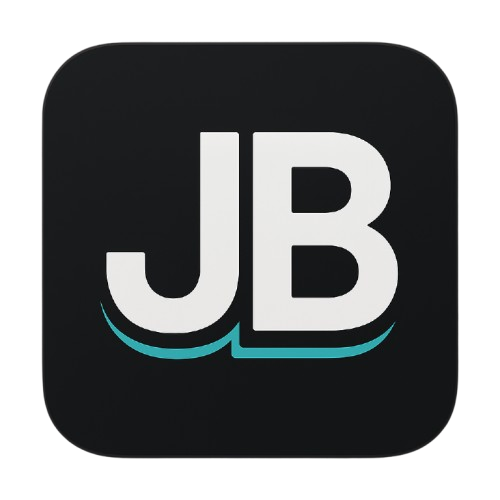Self-Hosting Next.js Apps with Hetzner and Coolify - Complete Step-by-Step Guide
Learn how to self-host your Next.js applications using Hetzner VPS and Coolify for a cost-effective alternative to Vercel with push-to-deploy, SSL certificates, and automatic deployments.
Self-Hosting Next.js Apps with Hetzner and Coolify - Complete Step-by-Step Guide
Self-hosting a web application should be simple, but quickly becomes complex when you need SSL certificates, push-to-deploy functionality, webhooks, PR deployments, and more. This guide shows you how to self-host your Next.js applications without losing your sanity while getting all the features of platforms like Vercel at a fraction of the cost.
What You'll Get
By the end of this guide, you'll have:
- A VPS server running Ubuntu on Hetzner
- Coolify (open-source PaaS) managing your deployments
- Automatic SSL certificates
- Push-to-deploy functionality via GitHub webhooks
- Custom domain setup
- Firewall security configuration
- Cost: ~$7/month vs $20-100+ on managed platforms
Overview: The Stack
- Hetzner: Provides the VPS server (Ubuntu with CPU, RAM, storage)
- Coolify: Open-source, self-hostable PaaS that gives you Vercel-like features
- Your Domain: Custom domain pointing to your applications
Coolify acts as the management layer on top of your Hetzner server, providing the same developer experience as Vercel while keeping costs low.
Prerequisites
- A domain name (for SSL and professional setup)
- Basic terminal/SSH knowledge
- A GitHub account with your Next.js project
- Credit card for Hetzner VPS (~$7/month)
Step 1: Setting Up Hetzner VPS
1.1 Create Hetzner Account and Get Credits
- Visit the Coolify documentation and use their referral link for €20 free Hetzner credits
- Register for a Hetzner account using the referral link
- Verify your account and add payment method
1.2 Create a New Server
-
Create Project:
- Login to Hetzner Cloud Console
- Create new project: "Self Hosting Tutorial"
-
Server Configuration:
- Click "Add Server"
- Location: Choose closest to your users (or database location)
- Image: Ubuntu (default selection)
- Type: Shared CPU (best price-to-performance ratio)
- Size: CPX21 (3 vCPU, 4GB RAM) - recommended for breathing room
- Networking: Default (Public IPv4 & IPv6)
1.3 Set Up SSH Key
Before creating the server, you need an SSH key for secure access:
- Generate SSH Key (in your terminal):
ssh-keygen -b 4096 -t rsa- Get Public Key:
cat ~/.ssh/id_rsa.pub- Add to Hetzner:
- Copy the entire public key output
- In Hetzner, click "Add SSH Key"
- Paste the key and name it (e.g., "MacBook Pro")
- Set as default key
1.4 Complete Server Setup
-
Finalize Configuration:
- Skip volumes, firewall (we'll add later), and backups
- Add server name: "Server for Demo Application"
- Click "Create & Buy Now"
-
Wait for Server:
- Server will show "Running" status with green indicator
- Copy the public IP address
Step 2: Installing Coolify
2.1 SSH into Your Server
ssh root@YOUR_PUBLIC_IPAccept the connection when prompted. You'll see the Ubuntu system information.
2.2 Install Coolify
Run the official Coolify installation command:
curl -fsSL https://coolify.io/install.sh | bashThis process takes 1-2 minutes. The installer includes programming jokes to keep you entertained while waiting.
2.3 Access Coolify Dashboard
-
Initial Access:
- Open
http://YOUR_PUBLIC_IP:8000in your browser - You'll see "Not Secure" warning (expected at this stage)
- Open
-
Create Admin Account:
- Fill out the registration form for the root admin user
- Complete the onboarding wizard
- Select "Local Host" for server type (the server where Coolify is running)
Step 3: Domain Configuration
3.1 DNS Setup
Before deploying applications, configure your domain for easier management:
-
Add DNS Records (in your domain registrar):
- A Record:
@→ Your server's public IP - A Record:
*→ Your server's public IP (for subdomains)
- A Record:
-
Propagation:
- DNS changes typically take 5-15 minutes to propagate
- Test with
nslookup your-domain.com
3.2 Configure Coolify Domain
-
Update Instance Settings:
- Go to Coolify Settings → Instance Settings
- Set Instance Domain:
https://admin.yourdomain.com - Instance Name: "Coolify"
- Click "Save"
-
Test Access:
- Visit
https://admin.yourdomain.com - You should see the Coolify login (now secure with SSL)
- Visit
-
Troubleshooting SSL Issues: If you see "Not Secure" warnings:
- Go to Servers → LocalHost
- Click "Restart Proxy"
- Wait for "Proxy started and configured successfully"
- Hard refresh your browser
Step 4: Deploying Your Next.js Application
4.1 Set Up GitHub Integration
-
Create GitHub App:
- Projects → Your Project → "Add New Resource"
- Select "Private Repository with GitHub App"
- Click "Add New GitHub App"
-
Configure GitHub App:
- Name: "GitHub [Your Name]"
- Leave organization empty
- Check "System Wide" if desired
- Webhook URL:
https://admin.yourdomain.com - Click "Register Now"
-
Complete GitHub Setup:
- GitHub will open for app creation
- App name: "coolify-[username]-access"
- Create the GitHub app
- Install on your account
- Grant access to repositories (all or selected)
4.2 Deploy Your Application
-
Select Repository:
- Back in Coolify: Projects → Add New Resource
- Select "Private Repository with GitHub App"
- Choose your GitHub app (may take a moment to load repositories)
- Select your Next.js repository
-
Configuration:
- Branch: main (or your default branch)
- Build Pack: Nixpacks (default)
- Port: 3000
- Static Site: No (for Next.js apps)
-
Application Settings:
- Name: Your app name
- Domain:
https://yourapp.yourdomain.com - Build Command: (uses package.json scripts by default)
- Add environment variables if needed
- Click "Save"
-
Deploy:
- Click the "Deploy" button
- Click "Show Debug Logs" to monitor progress
- Deployment typically takes 1-2 minutes
4.3 Verify Deployment
-
Check Status:
- Wait for "Success: application status updated"
- Visit your application URL
- If you see security warnings, click "Advanced" → "Continue"
-
Test Auto-Deployment:
- Make a change to your repository
- Push to GitHub
- Coolify should automatically trigger a new deployment via webhook
- Check Deployments tab to see "webhook" initiated deployments
Step 5: Security Configuration (Firewall)
5.1 Create Firewall Rules
Currently, Coolify is accessible via both your domain and the raw IP on port 8000, which is insecure.
-
Access Hetzner Firewall:
- Go to Hetzner Console → Firewalls
- Click "Create Firewall"
-
Configure Rules:
Inbound Rules:
- Rule 1: Protocol TCP, Port 22 (SSH access)
- Rule 2: Protocol TCP, Port 80 (HTTP)
- Rule 3: Protocol TCP, Port 443 (HTTPS)
Outbound Rules:
- Leave default (allow all outbound)
-
Apply Firewall:
- Name: "Default Coolify Firewall"
- Apply to: Select your server
- Click "Create Firewall"
5.2 Verify Firewall
-
Test Blocking:
- Try accessing
http://YOUR_IP:8000 - Should fail to connect (endless spinner or connection error)
- Try accessing
-
Confirm Domain Access:
https://admin.yourdomain.comshould still work- Your application domain should still work
This setup ensures Coolify is only accessible through your secure domain, not the raw IP.
Step 6: Additional Features
6.1 Environment Variables
- Add Variables:
- In your app settings → Environment Variables
- Add production environment variables
- Save and redeploy
6.2 Database Setup
- Add Database:
- Projects → Add New Resource → Database
- Choose PostgreSQL, MySQL, etc.
- Coolify handles backups and management
6.3 Multiple Applications
- Deploy More Apps:
- Each app gets its own subdomain
- Use the same GitHub integration
- Manage multiple projects easily
Troubleshooting Common Issues
SSL Certificate Problems
- Restart the Coolify proxy: Servers → LocalHost → Restart Proxy
- Ensure DNS propagation is complete
- Check domain configuration in settings
Deployment Failures
- Check debug logs during deployment
- Verify build commands in package.json
- Ensure environment variables are set correctly
Webhook Not Working
- Verify webhook URL in GitHub app settings
- Check GitHub app permissions
- Test manual deployments first
Firewall Issues
- SSH should always work (port 22)
- Ensure ports 80 and 443 are open
- Test firewall rules incrementally
Cost Breakdown
Monthly Costs:
- Hetzner CPX21 VPS: ~$7/month
- Domain (if new): ~$10-15/year
- Total: ~$7-8/month
Compare to:
- Vercel Pro: $20/month + usage
- Railway: $5-20+/month
- Render: $7-25+/month
Savings: 60-80% cost reduction for similar features
Key Benefits
- Full Control: Own your infrastructure and data
- Cost Effective: Significant savings over managed platforms
- Feature Complete: Push-to-deploy, SSL, webhooks, previews
- Scalable: Add more servers or resources as needed
- No Vendor Lock-in: Migrate anytime without platform-specific dependencies
Maintenance
Regular Tasks
- Server Updates: SSH into server and run
apt update && apt upgrade - Coolify Updates: Coolify auto-updates or check Settings → Update
- Backup Monitoring: Monitor Coolify's automatic backups
- Security: Review firewall logs periodically
Scaling
- Vertical Scaling: Upgrade Hetzner server specs
- Horizontal Scaling: Add more servers and use Coolify's multi-server features
- Database Scaling: Add dedicated database servers
Conclusion
You now have a production-ready, self-hosted Next.js deployment setup that rivals managed platforms like Vercel at a fraction of the cost. With Coolify managing the complexity, you get enterprise-grade features while maintaining full control over your infrastructure.
The combination of Hetzner's reliable infrastructure and Coolify's developer-friendly management layer provides an excellent foundation for hosting multiple applications, managing databases, and scaling as your needs grow.
Next Steps:
- Deploy additional applications
- Set up monitoring and alerting
- Implement backup strategies
- Explore Coolify's advanced features like PR deployments and staging environments

